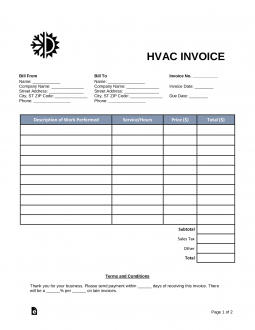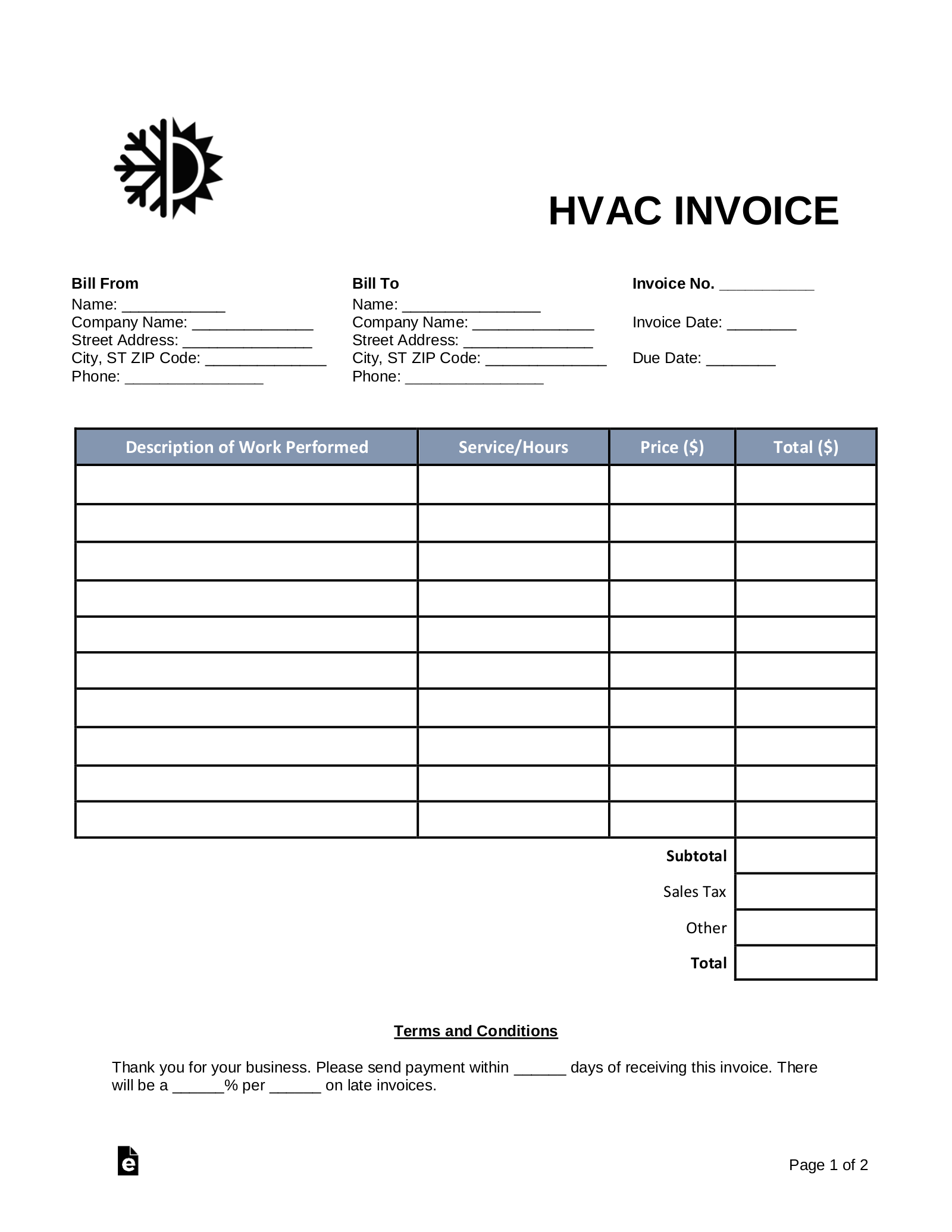Updated March 27, 2023
An HVAC invoice is a document that may be completed by any company that sells and installs HVAC units into homes or businesses to detail charges for services rendered. The same document may be used by contractors who would only install units for companies who outsource their installations to contractors. The document will provide itemized information to the client or business (in the event the unit(s) would be installed by contractors) once the unit has been sold and/or installed for the client.
What is HVAC?
HVAC stands for Heating-Ventilation-and-Air-Conditioning, and it’s the reason why most Americans enjoy all-season comfort in their homes in the face of fluctuating heat, cold, humidity, and allergens outside. Tucked away in the recesses of the walls, ceilings and basement of the modern home is a network of ducts, heating and cooling units, and other machinery that work in-sync to keep things cool, hot, dry, and otherwise pleasant indoors.
Elements of an HVAC Invoice
This invoice serves as a formal record of work and a request for payment. It should be prepared with care and delivered promptly.
The invoice should be dated and detailed. It must describe all services rendered, provide itemized costs and the total due, plus taxes, and should indicate the terms of payment, including both when the balance is due, and whether penalties will be assessed for late payment.
How to Bill for HVAC installation / maintenance?
1. Consult with client for a fair price
All terms should be agreed upon before work starts. Though businesses often use set pricing for both parts and labor, there may be some opportunity to negotiate with clients. Remember that word-of-mouth business can be a gift that keeps giving for independently-employed tradespeople, so working with clients to ensure that they’re happy – even cutting the occasional deal – is usually both a nice gesture and good business.
2. Troubleshoot current system
Where necessary, the professional will troubleshoot the system to determine the source of the issue. Perhaps a worn filter is interfering with air conditioning or a heat-pump has iced up. Perhaps residents have noticed an otherwise unclassifiable sound or odor.
3. Make itemized list of all parts
The next step for the tradesperson is to determine all replacement parts that are needed for the job. It’s best to approach a job in stages, so troubleshooting and diagnosis should be completed before going shopping for parts.
4. Calculate insurance and licensing fees
Professionals are called professional for a reason. A licensed and insured HVAC technician must pass (and pay for) licensing exams, and maintain liability insurance. These costs add up and should be factored into billing rates to make sure that the business covers all costs
5. Finalize HVAC Invoice for payment
Always ensure that invoices are accurate before sending them off to customers. Follow up with customers as necessary to ensure that bills have been received.



